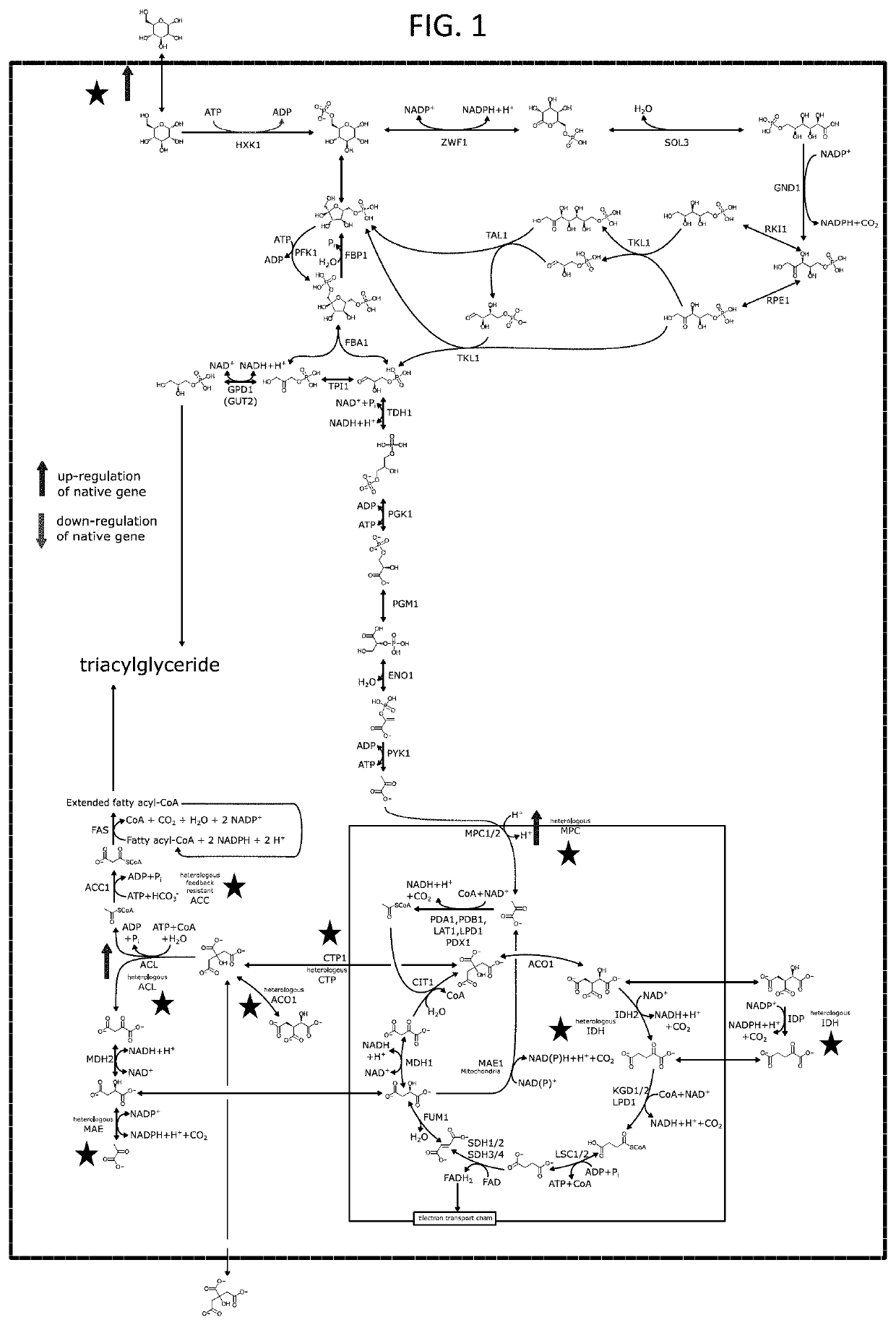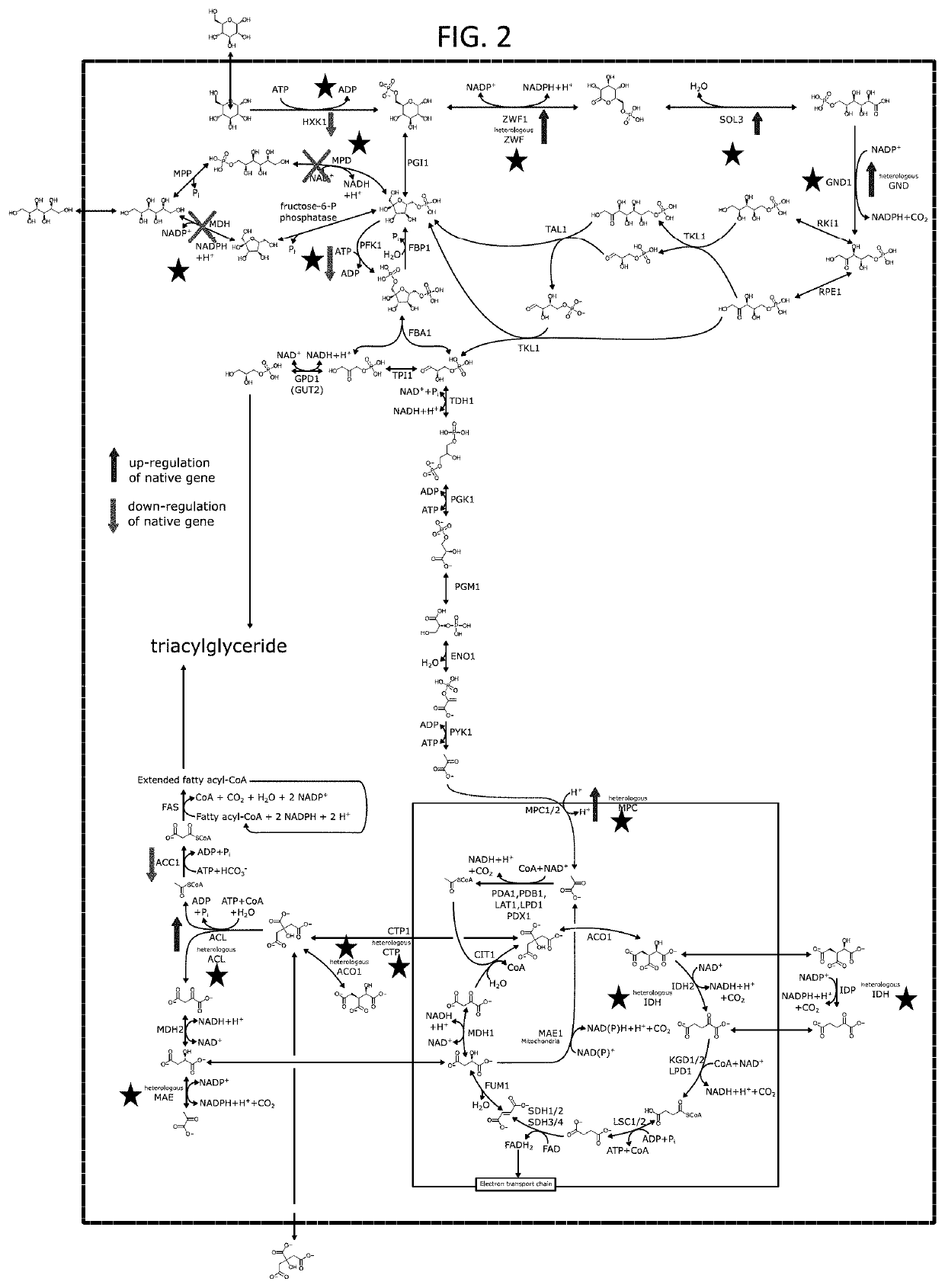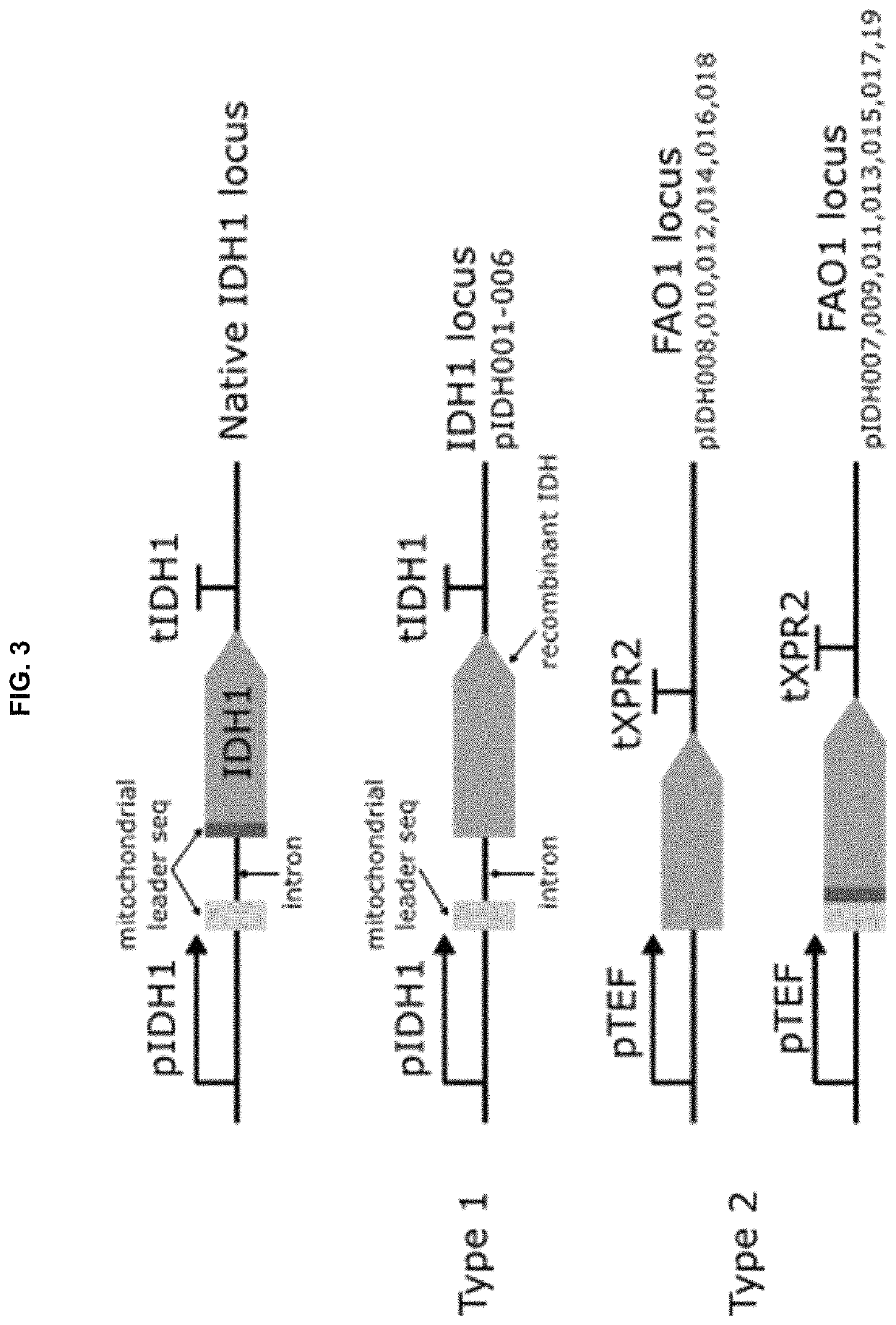Multi-substrate metabolism for improving biomass and lipid production
a multi-substrate, biomass and lipid technology, applied in hydrolases, biochemistry apparatus and processes, enzymes, etc., can solve the problems of compromising host viability, compromising the viability of host cells, and microbial de novo pathways for the purpose of enriching certain lipid species, so as to improve the production of one or more lipids, improve the production of biomass, and reduce the effect of equivalent availability
- Summary
- Abstract
- Description
- Claims
- Application Information
AI Technical Summary
Problems solved by technology
Method used
Image
Examples
example 1
Lipid Production by Alleviating AMP Allosteric Inhibition
Background and Rationale
[0268]Many microorganisms down-regulate respiration under non-optimal growth conditions to encourage carbon / energy storage via citrate and lipid synthesis. Under nitrogen limited conditions, intracellular AMP levels are depleted by an AMP deaminase (AMD1). Reduced AMP levels in these microorganisms, inactivate the mitochondrial isocitrate dehydrogenase complex (IDH1 / 2) through allosteric regulation, which results in accumulation of isocitrate, and reduced TCA cycle throughput.
[0269]Both native fatty acid synthesis, and the bypass methyl palmitate based synthesis of Z11-16 acid, require reducing equivalents in the form of NADPH and NADH. The inventors hypothesized that increasing the oxidation rate of citrate (through IDH activation) could increase the available reduced cofactor pool leading to increased production of unsaturated fatty acids.
Experimental Design
[0270]Two different loci were targeted to te...
example 2
Lipid Production and Z11-16 Selectivity Through Expression of Decarboxylating Malic Enzyme and / or Oxidative Pentose Phosphate Pathway Enzymes (PPP)
Background and Rationale
[0295]Microorganisms of the present disclosure produce citrate as co-product under nitrogen-limited conditions. This is because during nitrogen starvation many organisms, including Y. lipolytica down-regulate respiration to divert carbon / energy storage via lipid synthesis. Citrate is first exported from mitochondria into the cytosol and subsequently from the cell. Exported citrate can be re-assimilated, especially when alternative carbon sources are scarce. Alternatively, the combination of the enzymes ATP citrate lyase (ACL), malate dehydrogenase (e.g., MDH2) and cytosolic malic enzyme can turn cytosolic citrate into pyruvate, to feed back into the TCA cycle to power further lipid synthesis (FIG. 4). Many organisms, including Y. lipolytica however, do not express a cytosolic malic enzyme.
[0296]The inventors furthe...
example 3
Lipid Production Through Expression of Acetyl-CoA Carboxylase (ACC) Enzymes that are Modified to Prevent Regulatory Inhibition Via Phosphorylation. (Prophetic)
Background and Rationale
[0310]ACC catalyzes the irreversible conversion of acetyl-CoA to malonyl-CoA, one of the key substrates in lipid biosynthesis. To regulate lipid biosynthesis, kinases inhibit ACC via post-translational modifications. Kinases phosphorylate ACC serine residues, which, when phosphorylated, interact with two downstream arginine residues to inhibit the activity. In order to counteract the microorganism's native regulation of lipid biosynthesis, a few engineering approaches can be taken to increase lipid accumulation in the microorganism, aided by the fact that neither of the residues involved in ACC inhibition are also involved in the conversion of acetyl-CoA to malonyl-CoA. The first approach is to overexpress heterologous ACC variants which may not be phosphorylated by host kinases and are thus not inhibit...
PUM
| Property | Measurement | Unit |
|---|---|---|
| fatty acid | aaaaa | aaaaa |
Abstract
Description
Claims
Application Information
 Login to View More
Login to View More - R&D
- Intellectual Property
- Life Sciences
- Materials
- Tech Scout
- Unparalleled Data Quality
- Higher Quality Content
- 60% Fewer Hallucinations
Browse by: Latest US Patents, China's latest patents, Technical Efficacy Thesaurus, Application Domain, Technology Topic, Popular Technical Reports.
© 2025 PatSnap. All rights reserved.Legal|Privacy policy|Modern Slavery Act Transparency Statement|Sitemap|About US| Contact US: help@patsnap.com



